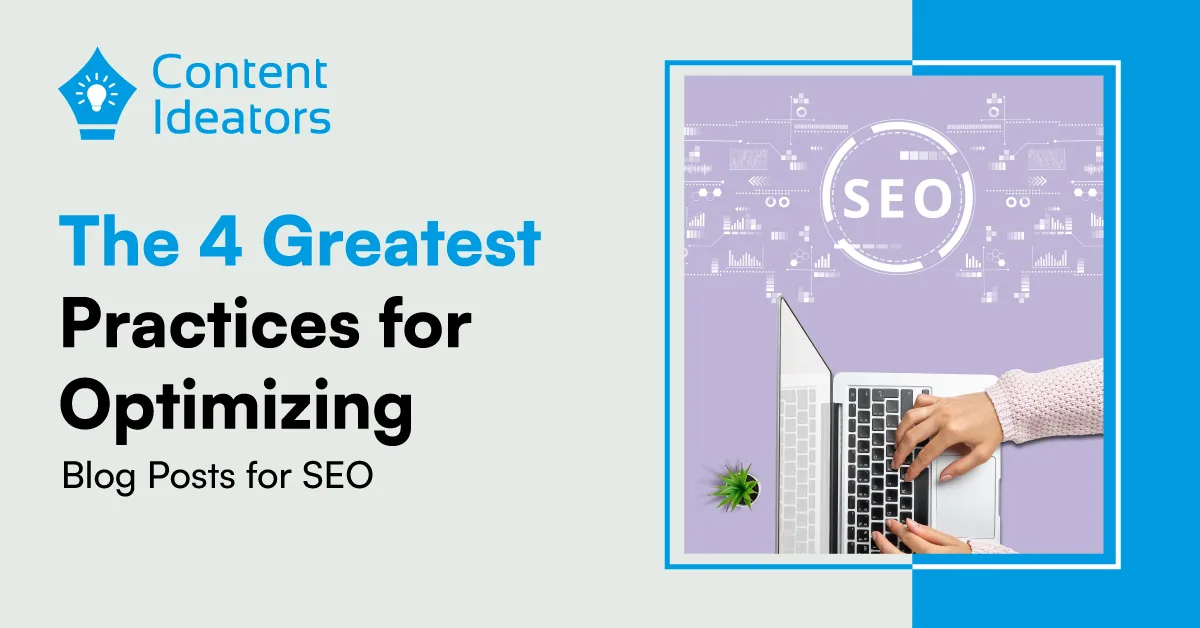Top 5 Strategies to Boost Your E-commerce Product Page SEO
 September 24, 2024
September 24, 2024SEO plays a significant role in the success of any e-commerce business. A well-optimized product page SEO strategy can be the difference between a page that drives traffic and conversions and one that remains unnoticed.
By focusing on e-commerce SEO and the finer aspects of product optimization, businesses can effectively increase their visibility and attract potential customers.
This blog aims to provide actionable tips and e-commerce SEO strategies that help you optimize product pages for better rankings, enhanced user experience, and ultimately, higher sales.
1. Keyword Research for Product Pages
Effective product page SEO starts with thorough keyword research. Identifying the right keywords is essential to ensure your product pages rank well in search results and attract the right audience.
a) Understand Search Intent:
- When selecting keywords, consider the intent behind search queries.
- Customers searching for product-related terms often have a buying intent, which makes e-commerce keyword research slightly different from other types of SEO.
- Use tools like Ahrefs or SEMrush to identify keywords that not only have high search volumes but also align with purchase intent.
b) Focus on Long-Tail Keywords:
- Long-tail keywords, such as “buy waterproof hiking boots online,” may have lower search volumes, but they attract highly targeted traffic.
- These keywords are less competitive and more likely to convert, making them valuable for product optimization.
c) Strategically Place Keywords:
- Incorporate your primary and secondary keywords naturally into your product descriptions, meta tags, and on-page SEO elements like titles, headers, and URLs.
- Ensure the content remains readable and engaging to users while satisfying search engine algorithms. For instance, a product title like “Waterproof Hiking Boots for Men – Lightweight and Durable” effectively integrates keywords without compromising readability.
d) Utilize E-commerce Specific Tools:
- Tools like Google Keyword Planner and Amazon’s search suggestions can provide insights into what customers are searching for.
- These tools help you discover keywords that your competitors might overlook, giving you an edge in e-commerce SEO.
2. Crafting Compelling Product Descriptions

Well-crafted product descriptions are essential for effective product page SEO. They do more than just describe the item—they drive conversions by engaging potential buyers and enhancing your e-commerce SEO efforts.
a) Focus on Unique and Engaging Content:
- Avoid using generic or manufacturer-provided descriptions. Instead, create original content that highlights the unique features and benefits of your products.
- For instance, instead of just stating “This jacket is waterproof,” emphasize its value by saying, “Stay dry even in the heaviest downpour with this advanced waterproof jacket, designed for ultimate comfort and durability.”
b) Incorporate Keywords Naturally:
- Strategically place keywords within the product descriptions without compromising readability. Use your primary keyword early in the description and integrate secondary keywords where relevant.
- For example, “Our cutting-edge jacket offers unmatched durability and comfort, making it the ideal choice for those looking to optimize product pages for outdoor gear.”
c) Address Customer Needs and Pain Points:
- Effective descriptions should resonate with your target audience by addressing their needs and concerns.
- Highlight how the product solves a problem or improves the user’s experience, which can significantly enhance your conversion rate optimization.
d) Leverage User-Generated Content:
- Incorporate customer reviews and testimonials into your product pages. This content not only adds credibility but also provides fresh, relevant material that boosts on-page SEO.
- User reviews can also serve as a natural way to include additional keywords, enhancing overall product optimization.
e) Optimize Meta Tags and Snippets:
- Ensure that your meta tags and snippets are well-optimized with relevant keywords.
- These elements play a crucial role in improving visibility in search results and encouraging click-throughs, making them a critical component of your e-commerce SEO strategies.
3. Optimizing Product Images and Videos
Visual content plays a pivotal role in product page SEO, directly impacting both user engagement and search engine rankings. High-quality images and videos can significantly enhance the user experience and contribute to better conversion rate optimization.
a) Use High-Quality Images and Videos:
- Ensure that all product visuals are of high quality, clear, and detailed. Images should accurately represent the product, while videos can showcase it in action, helping potential buyers make informed decisions.
b) Optimize Image Alt Text and File Names:
- Search engines rely on alt text to understand the content of images. Include relevant keywords in your alt text, such as “high-performance hiking boots for men,” to improve your on-page SEO.
- Similarly, rename your image files with descriptive names that include keywords, like “waterproof-hiking-boots.jpg,” instead of generic names like “IMG1234.jpg.”
c) Reduce File Size for Faster Load Times:
- Large image and video files can slow down your page load times, negatively affecting your e-commerce SEO. Compress your images without sacrificing quality, and use formats like WebP that offer better compression.
- Implement lazy loading techniques to ensure that images and videos load only when they come into the user’s view, enhancing overall user experience.
d) Leverage Video Content for Engagement:
- Videos not only engage users but also keep them on your page longer, which is a positive signal for search engines.
- Use videos to provide detailed product demonstrations, customer testimonials, or unboxing experiences, all of which can contribute to better product optimization.
| Tool | Key Features | Best For |
| TinyPNG/TinyJPG | Compresses JPEG and PNG files with minimal quality loss; supports WebP format | Reducing image file sizes efficiently |
| Smush | Image compression, lazy loading, and automated optimization for WordPress | WordPress users looking for easy optimization |
| HandBrake | Open-source video transcoder; compresses and converts videos to various formats | Optimizing videos for web usage |
| Cloudinary | Delivers optimized images and videos through a CDN; supports automatic format conversion | Advanced image and video optimization, including format delivery and adaptive bitrate streaming |
4. Enhancing User Experience for Better Rankings

Improving user experience (UX) on your e-commerce site is essential for both product page SEO and increasing conversion rates. A well-optimized UX not only keeps visitors engaged but also signals to search engines that your site is valuable and relevant.
a) Prioritize Fast Load Times:
- Page speed is a critical factor in both e-commerce SEO and conversion rate optimization. Use tools like Google PageSpeed Insights to identify areas where you can improve load times.
- Compress images, minimize JavaScript, and leverage browser caching to ensure your pages load quickly, especially on mobile devices.
b) Ensure Mobile Responsiveness:
- With the majority of online shopping now happening on mobile, it’s crucial that your product pages are fully responsive.
- A mobile-friendly design improves user experience and helps your site perform better in Google’s mobile-first indexing, a key aspect of e-commerce SEO strategies.
c) Simplify Navigation and Structure:
- Easy-to-use navigation enhances on-page SEO by helping users find what they’re looking for quickly.
- Use clear menus, breadcrumbs, and internal links to guide users through your site. The more intuitive the navigation, the longer users stay on your site, reducing bounce rates and improving rankings.
d) Optimize Calls-to-Action (CTAs):
- Clear, compelling CTAs are essential for driving conversions. Use action-oriented language like “Add to Cart” or “Buy Now” and place them strategically on your product pages to guide users towards making a purchase.
5. Building Backlinks and Leveraging Social Proof
Backlinks and social proof are powerful tools in enhancing product page SEO. They contribute to both credibility and visibility, making them essential components of a comprehensive e-commerce SEO strategy.
a) Focus on High-Quality Backlinks:
- Backlinks from reputable sites signal to search engines that your content is valuable and trustworthy. To acquire these, create content that others in your industry will want to link to, such as detailed product guides or comparisons.
- Engaging in partnerships, guest blogging, and influencer collaborations are also effective ways to generate backlinks. Ensure these links come from authoritative sites to maximize their impact on your product optimization efforts.
b) Encourage Customer Reviews:
- User-generated content, such as customer reviews, serves as valuable social proof that enhances trust and credibility.
- Positive reviews can improve your conversion rate optimization by influencing potential buyers’ decisions.
- Encourage satisfied customers to leave reviews by simplifying the process and offering incentives like discounts on future purchases.
c) Utilize Testimonials and Case Studies:
- Adding customer testimonials and case studies to your product pages not only boosts on-page SEO but also provides additional content that can rank in search engines.
- This content shows real-world applications of your products, reinforcing their value and effectiveness.
d) Leverage Social Media for Backlinks:
- Promote your products on social media platforms to generate buzz and increase the chances of earning backlinks.
- Social media shares can indirectly influence SEO by driving traffic to your site, which is another positive signal for search engines.
| SEO Tool | Key Features | Best For | Price |
| SEMrush | Keyword research, competitor analysis, SEO rank tracking | Comprehensive SEO strategy management | Starting at $129.95/month |
| Ahrefs | Backlink analysis, keyword research, content analysis, rank tracking | Improving domain authority and backlinks | Starting at $99/month |
| Google Search Console | Performance monitoring, technical issue identification, indexing troubleshooting | Technical SEO and performance tracking | Free |
| Moz Pro | Keyword research, site audits, rank tracking | User-friendly SEO with powerful analytics | Starting at $99/month |
| Screaming Frog | Technical SEO audits, crawling for broken links, duplicate content, missing meta tags | In-depth technical SEO analysis | Free (Paid plans start at $259/year) |
Conclusion

Optimizing your product pages for SEO is an ongoing process that requires attention to detail and adaptability to evolving search engine algorithms. By focusing on product page SEO strategies such as thorough keyword research, compelling product descriptions, high-quality visuals, enhanced user experience, and leveraging backlinks and social proof, you can significantly improve your e-commerce site’s visibility and conversions.
Continuous optimization and monitoring are key to sustaining success. For expert assistance in creating SEO-optimized content, consider partnering with Content Whale, where we specialize in product optimization, SEO audits, and content marketing strategies tailored to your needs.
FAQs
1. How do I choose the right keywords for my product pages?
Start with thorough keyword research, focusing on terms with strong purchase intent. Use tools like Ahrefs, SEMrush, and Google Keyword Planner to identify relevant keywords. Incorporate long-tail keywords that reflect specific user needs, such as “best winter boots for snow.”
2. What are the best practices for writing product descriptions?
Create unique, informative, and engaging product descriptions that highlight the benefits and features of your products. Include relevant keywords naturally and consider adding user-generated content like reviews to enrich the descriptions and enhance product page SEO.
3. How can I optimize images for better SEO on product pages?
Use descriptive file names and alt text that include keywords. Compress images to improve load times, and consider using modern formats like WebP. Implementing lazy loading can also help improve your page speed, benefiting your e-commerce SEO.
4. Why is user experience important for e-commerce SEO?
A positive user experience improves engagement metrics such as time on page and bounce rate, which are critical for on-page SEO and overall product optimization.
5. How do backlinks improve the SEO of my product pages?
High-quality backlinks from authoritative sites boost your site’s credibility, improve your search engine rankings, and drive more traffic to your product pages.

